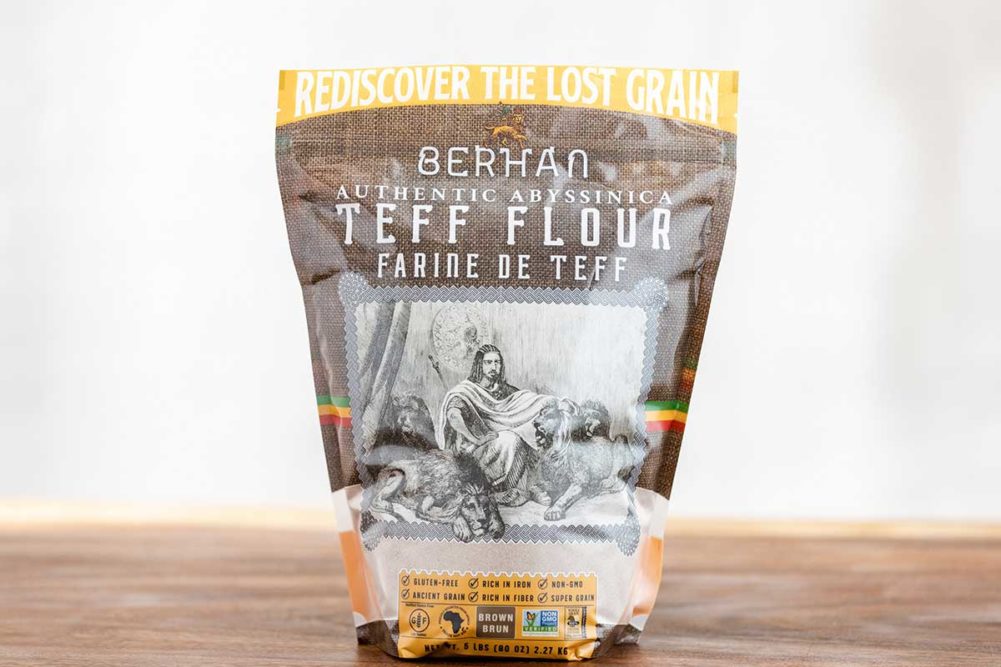More than half of Americans reported that they have followed a specific eating pattern or diet at some point in the past year, according to the “2023 Food and Health Survey” from the International Food Information Council (IFIC). The most popular dietary plans were high-protein (18%), mindful eating (17%), calorie counting (12%), clean eating (12%) and intermittent fasting (12%).
Additionally, a number of Americans have eliminated or reduced gluten (6%) and carbohydrates (6%), such as refined grains and added sugars.
Avoiding gluten and simple carbohydrates supports the ketogenic diet, which is high in fat — about 70% of the daily diet — along with about 20% protein and 5% each of simple carbohydrates and non-starchy vegetables.
The challenge for bakers serving consumers on gluten-free, grain-free, low carb and keto diets is to replace wheat flour and sugar. The good news is that ingredient suppliers have filled their toolboxes to assist with these efforts.
“In the past, free-from products centered around claims such as no artificial preservatives, sugars, dyes, etc. But today, gluten-free has become one of the most popular types of free-from claims,” said Brenda Zavala-Livengood, senior marketing specialist, Kemin Food Technologies. “While keto-friendly and free-from products were once niche products, both areas have gained mainstream popularity and have earned increased shelf space at supermarkets offering a growing, varied range of products.”
To effectively eliminate wheat and other gluten-containing grains, product developers will often turn to proteins and fibers, nutrients that appeal to health and wellness lifestyles. When replacing sugar and other caloric carbohydrate sweeteners for keto-friendly claims, natural nonnutritive sweeteners such as stevia, monk fruit and allulose are the go-to for many bakers.
“Consider the role of the ingredient that is being substituted,” said Yanling Yin, PhD, director, research and development, Corbion. “Adjustments to the recipe may be needed, such as modifying the liquid content when using alternative flours that are more absorbent. Blending different alternative flours also can yield the best texture and flavor. Remember that sugar substitutes might not react as traditional sugar during baking, so further adjustments may be necessary.”
Blending gluten-free ingredients can also help with proper dough rise.
“Bakers and snack makers are presented with a myriad of challenges when removing or reducing ingredients that provide integral structural and functional attributes,” said Jeff Hodges, manager, bakery, snacks and confections applications, ADM. “A common issue with gluten-free breads is achieving proper dough rise due to the absence of gluten. To overcome this, bakers can blend gluten-free ingredients with other rising solutions.”
For instance, combining tapioca starch and sorghum flour can create crispier flatbreads and buns with a soft, pillowy center, he said.
“Gluten-free cupcakes can be denser and less fluffy than the traditional version,” Mr. Hodges continued. “Bakers can look to soy and pea protein powders, along with flax and chia powders, to provide functional attributes to aid in binding and emulsification in snack and bakery formulations. They can also use chia meal to create cupcakes that are vegan, gluten-free and dairy-free.”
When reducing or eliminating sugar in keto-friendly baked goods, the challenge is greater than simply replacing sweetness. That’s because sugar and similar caloric carbohydrate sweeteners also provide structure to baked goods.
Proteins and fibers add bulk, flavor and, in some instances, contribute a touch of sweetness. For example, dairy cream and butter, both commonly used in keto-friendly baking to boost fat content, contain lactose, also known as milk sugar, which imparts some sweetness.
Some proteins and fibers come with added benefits for the body or planet. For Fair & Square, Los Angeles, the primary alternative flour used in its gluten-free crackers — green banana flour — benefits both.
“Our crackers are gut-friendly because they are free from ingredients known to disrupt the gut and full of prebiotic fiber to nurture it,” said Alex Duong, founder and chief executive officer. “Our prebiotic fiber comes from our No. 1 ingredient, which is green banana flour. The green bananas are harvested before they mature in size and before their starches change into sugar. The flour does not taste like bananas.”
Green banana flour also reduces environmental waste by giving new life to surplus and unwanted green bananas. It also allows for a no-added-sugar claim.
Citrus fiber ingredients are often found in gluten-free baked foods and snacks, as the fibers have superior water-holding capacities and assist with texture and slow staling.
This article is an excerpt from the July 2023 issue of Baking & Snack. To read the entire feature on Keto, Gluten-Free, Grain-Free, click here.





